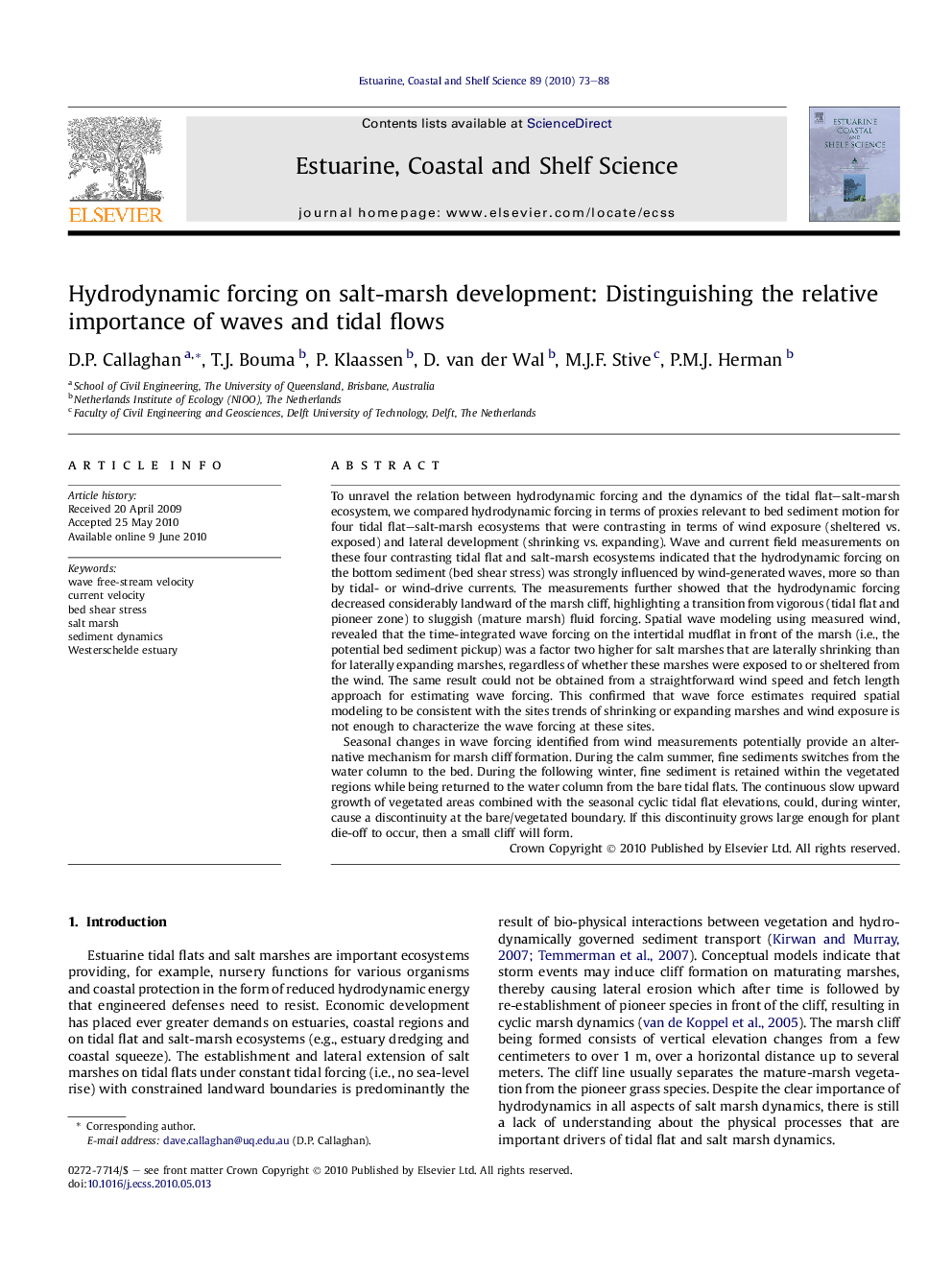| کد مقاله | کد نشریه | سال انتشار | مقاله انگلیسی | نسخه تمام متن |
|---|---|---|---|---|
| 4540753 | 1326689 | 2010 | 16 صفحه PDF | دانلود رایگان |

To unravel the relation between hydrodynamic forcing and the dynamics of the tidal flat–salt-marsh ecosystem, we compared hydrodynamic forcing in terms of proxies relevant to bed sediment motion for four tidal flat–salt-marsh ecosystems that were contrasting in terms of wind exposure (sheltered vs. exposed) and lateral development (shrinking vs. expanding). Wave and current field measurements on these four contrasting tidal flat and salt-marsh ecosystems indicated that the hydrodynamic forcing on the bottom sediment (bed shear stress) was strongly influenced by wind-generated waves, more so than by tidal- or wind-drive currents. The measurements further showed that the hydrodynamic forcing decreased considerably landward of the marsh cliff, highlighting a transition from vigorous (tidal flat and pioneer zone) to sluggish (mature marsh) fluid forcing. Spatial wave modeling using measured wind, revealed that the time-integrated wave forcing on the intertidal mudflat in front of the marsh (i.e., the potential bed sediment pickup) was a factor two higher for salt marshes that are laterally shrinking than for laterally expanding marshes, regardless of whether these marshes were exposed to or sheltered from the wind. The same result could not be obtained from a straightforward wind speed and fetch length approach for estimating wave forcing. This confirmed that wave force estimates required spatial modeling to be consistent with the sites trends of shrinking or expanding marshes and wind exposure is not enough to characterize the wave forcing at these sites.Seasonal changes in wave forcing identified from wind measurements potentially provide an alternative mechanism for marsh cliff formation. During the calm summer, fine sediments switches from the water column to the bed. During the following winter, fine sediment is retained within the vegetated regions while being returned to the water column from the bare tidal flats. The continuous slow upward growth of vegetated areas combined with the seasonal cyclic tidal flat elevations, could, during winter, cause a discontinuity at the bare/vegetated boundary. If this discontinuity grows large enough for plant die-off to occur, then a small cliff will form.
Journal: Estuarine, Coastal and Shelf Science - Volume 89, Issue 1, 1 September 2010, Pages 73–88